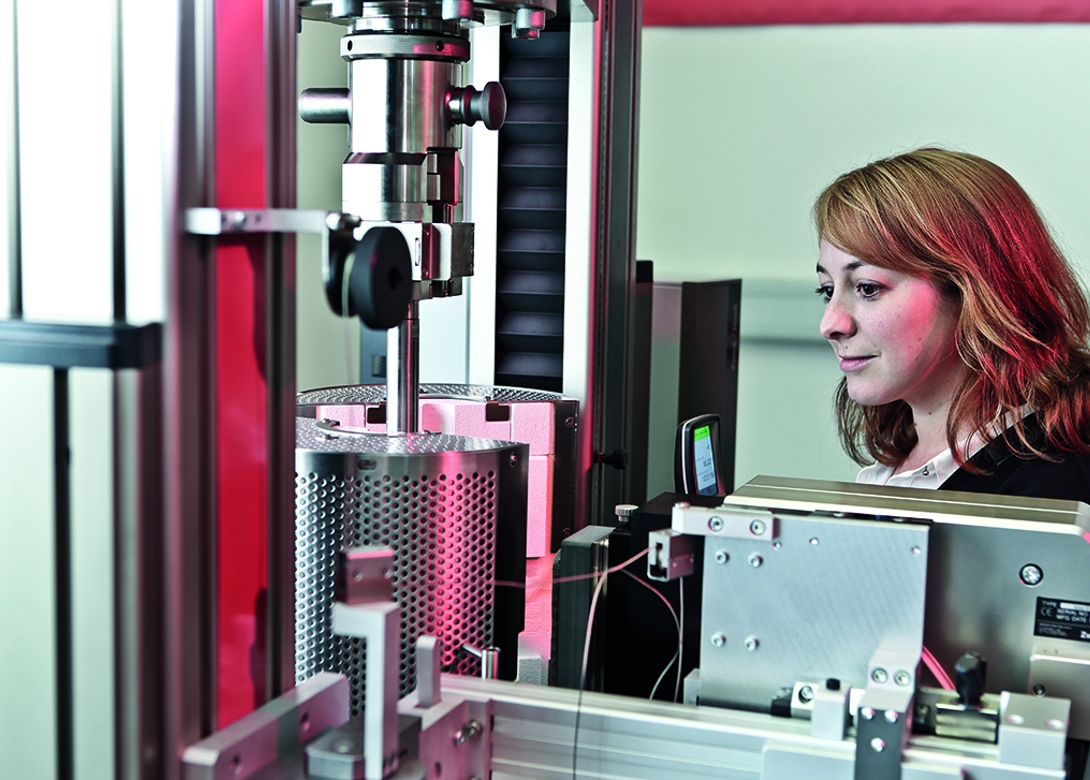
In applications such as engine design, power plant design, powertrains and chemical plants, the material behaviour under increased temperatures – up to approximately 2,000°C and higher – is of vital importance. For these tests, ZwickRoell is able to offer modular standard solutions for a temperature range of -80°C to 1,600°C and customised testing solutions up to a temperature of 2,000°C.
Well considered solutions for high-temperature testing should be based on proven load frame concepts. Flexible and modular load frame design, in conjunction with an array of high-temperature components, should enable the configuration of individual testing systems that are optimally matched to the testing requirements of the end users.
In order to meet various testing standards requirements, and customer demands for high-temperature testing, it is possible to acquire modular high-temperature testing systems for quasi-static tensile, compression and flexure tests. The optimal system combination is achieved when the customer-specific requirements such as the test temperature, the specimen shape to be tested, specimen geometry, and specimen size, as well as the components used in the testing system, work in harmony.
The key components in high-temperature testing systems are load frame, extensometers, heating systems, switching and control systems, specimen temperature measurement, load string and specimen grips. The array of generally available load frames, heating systems, specimen temperature measuring devices, extensometers, and specimen adapters will cater for numerous individual system combinations.
Typical system combinations available from ZwickRoell, which provide optimal solutions for those laboratories engaged with elevated-temperature materials testing, are outlined below:
- Depending on the materials to be tested, 1, 2, or 3 zone furnaces with air, vacuum or inert gas environments are available.
- Available solutions feature optimal coordination of furnaces including temperature controllers; appropriate specimen grips to accommodate tensile and flexure tests; and the respective contact and non-contact extensometers.
- The use of a centrally divided hinged furnace enables the test specimen pull-rods to be inserted and conveniently withdrawn from the furnace.
- Specimen temperature measuring devices with up to three thermocouples can be used for direct temperature measurement on the specimen, ensuring standard-compliant testing at temperature.

Will joined Fastener + Fixing Magazine in 2007 and over the last 15 years has experienced every facet of the fastener sector - interviewing key figures within the industry and visiting leading companies and exhibitions around the globe.
Will manages the content strategy across all platforms and is the guardian for the high editorial standards that the Magazine is renowned.
Don't have an account? Sign Up
Signing up to Fastener + Fixing Magazine enables you to manage your account details.